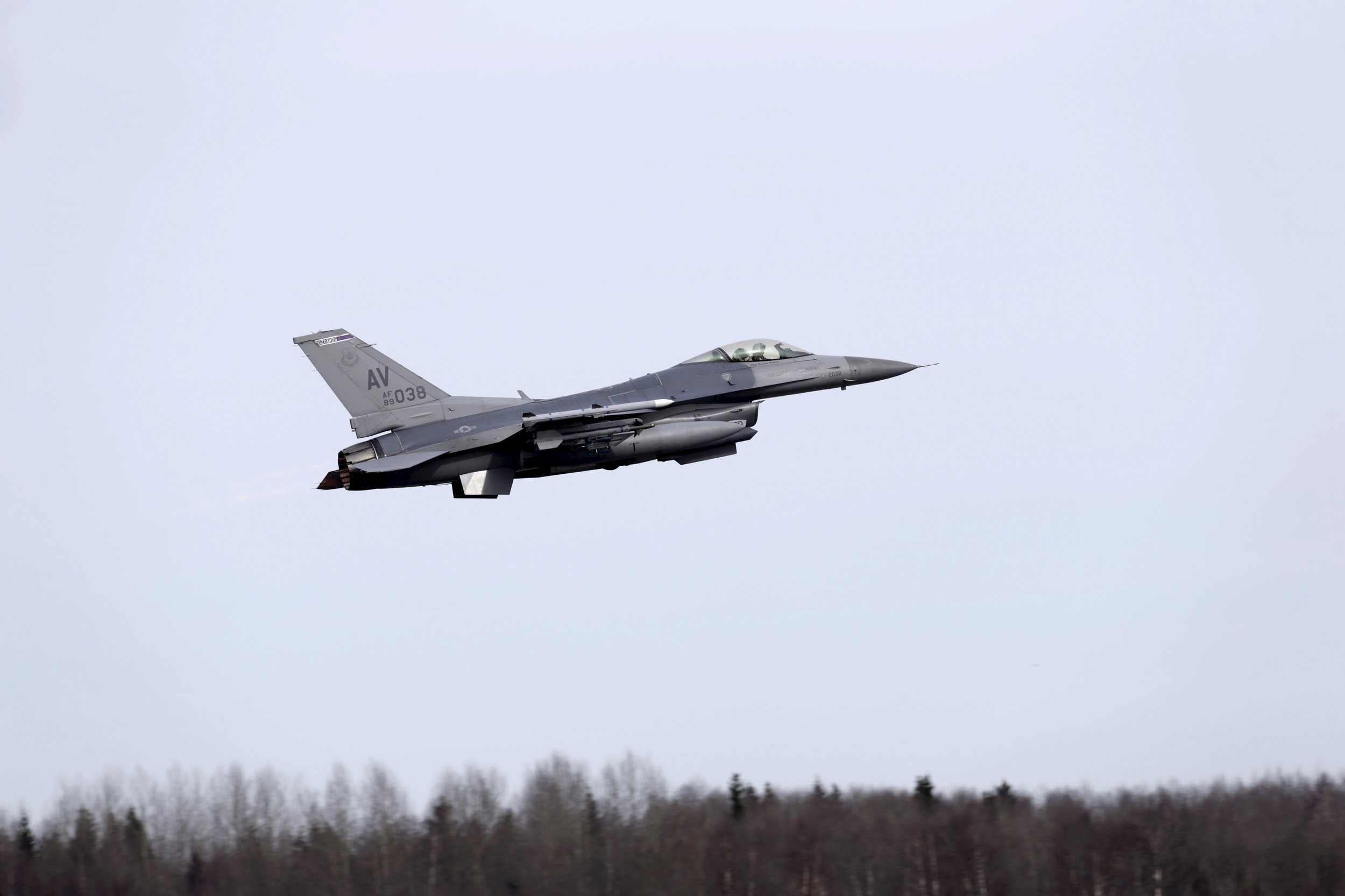Germanwings Crash 'Could Have Been Averted With Military Autopilot System'
The Automatic Ground Collision Avoidance System (Auto-GCAS) last year saved a US Air Force F-16 fighter from crashing after an attack Ints Kalnins/Reuters
Technology that would have prevented the Germanwings plane crash tragedy is already in use by the US Air Force (USAF) and should be used by all commercial aircraft, experts have said.
Newsweek spoke to flight engineers who declined to be named but confirmed that the transfer of military technology to civilian aircraft would have prevented the deaths of 150 victims.
The USAF has acknowledged that autopilot technology, developed jointly with NASA, saved an F16 fighter jet and its pilot while flying over Syria last November, but like most military technology will take “forever and a day” to make it on board commercial aircraft.
The Automatic Ground Collision Avoidance System (Auto-GCAS) was introduced into USAF F16s last year and saved a plane and pilot after an apparent ground-to-air attack. The technology monitors the plane’s position and distance relative to terrain in real time. If the plane is about to crash and there is no positive response from the pilot, an automated piloting system takes over to manoeuvre the plane out of danger.
NASA engineers are currently working on integrating the Auto-GCAS technology into smartphones which could avert controlled flight into terrain crashes similar to the Germanwings crash, but the transfer of such technology from military to commercial aircraft must be sped up to prevent tragedies of a similar nature in the future, says Chris Yates, director of aviation safety and security firm Yates Consulting, based in the UK.
“It’s probable that Auto-CGAS will come into commercial aircraft, particularly in light of what happened with the Germanwings flight, but the introduction of new systems into commercial aircraft takes forever and a day,” says Yates.
Germanwings flight 4U 9525 crashed in the French Alps en route from Barcelona to Düsseldorf, last month, killing all 150 people on board. Prosecutors believe that German co-pilot Andreas Lubitz deliberately crashed the plane. Prosecutors have said that Lubitz had researched suicide methods and the security of cockpit doors prior to the flight and accelerated the plane as it descended.
A potential problem, Yates notes, is the possibility of aircraft under automated control coming into conflict with other aircraft on the same flight route, though he believes such problems could be ironed out.
Auto-GCAS has been developed by NASA, the USAF and aerospace technicians Lockheed Martin over the past 25 years. NASA and Boeing have considered integrating the technology into commercial aircraft, but NASA’s chief Auto-GCAS researcher Mark Skoog says the transfer of technology is being held up by security issues, raising the possibility of tampering with such a system rendering it unsafe.
“While it is possible to transition this system to the commercial airline industry and general aviation community, the level of automation and system isolation required to prevent onboard tampering directly drives the time and effort it would take to bring such a system through design and certification,” says Skoog.
“It would take considerable co-ordination with other federal agencies and the airline industry to bring this technology to the point where it will directly benefit the flying public.”
According to NASA, controlled flight into terrain accidents account for around 100 deaths a year in the US.
Such accidents occur when the pilot wilfully ignores cockpit warning systems or is rendered unconscious or incapacitated due to other factors.






